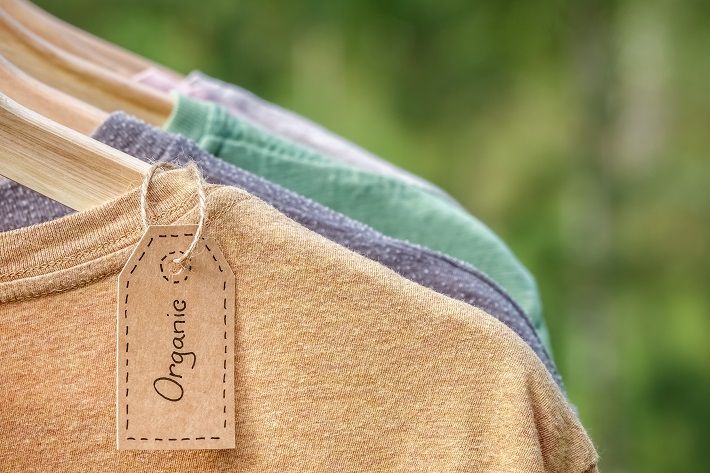Sustainability Conclave: Replacing polyester can have the most impact

“The global textile market is valued at $1.7 trillion and is still growing and new polyester plants are being built. Polyester is the most problematic fibre in the textile industry as each ton of polyester emits 29 tons of CO2 during production. Polyester stays for 1,000 years once it is discarded. It is responsible for 30 per cent of all microplastics in the ocean. Only 1 per cent of all textiles are recycled today, and hence there is a need to bring new concepts as quickly as we can to market today,” Carlo Centonze, CEO & Co-Founder of Switzerland-based HeiQ, said during a panel discussion on ‘Material innovation: Pulse of research in sustainable textile materials’ on the second day of Sustainability Conclave 2022.
Stating that 17-20 per cent of global wastewater comes from the textile dyeing and finishing industry, Maddi Koteswara Rao, Huntsman Textile Effects’ Regional Technical Manager - SE & NE Asia and Vietnam, said that there is lot of emphasis on resource saving in the last 10-15 years. He said that new technologies are coming for saving resources like water, energy and reducing greenhouse gas emissions (GHGs). “If a process or material is designed in such a way that it saves 30-40 per cent of gas emissions, that is an incredible step.”
Rao highlighted that resource saving, clean chemistries, and long-lasting materials is important as the textile industry moves towards becoming more sustainable. “Gen Z is looking for long lasting materials, as the life cycle is better and reduce landfills.”
Adding that design of material and product design is important, Rao said that sustainability starts with the design of the material, i.e., how will be the lifecycle during i. production, ii. when consumer is using, and iii. when he wants to dispose. The second part is how the material is produced and what type of technologies are being used to produce.
Participating in the discussion, Sydney Gladman, Chief Scientific Officer at the US-based Material Innovation Initiative, said there is a demand for next-gen alternatives like plant-based and bio-based materials. However, at present, there is no large-scale production, but the materials are being tested by brands by launching collections.
Pointing out that textiles should be long lasting, Centonze said that unfortunately most textiles on the market today are worn for less than a year. It is because these textiles are of poor quality as consumers want to buy cheap. So, a sustainable solution has to be “circular that works with short cycle of consumers using them. Circularity in fashion is to keep materials in the loop so we don’t have to waste.”
Giving a comparison, Centonze said that the paper industry recycles 85 per cent while textile industry recycles only one per cent. So, there’s a need to work on circularity, recycling, better quality and long-lasting products. Here he mentioned that one component of functionality is odour control. “One-third of environmental footprint is happening because of washing. In order to make people wash less, we need to make textiles that do not give odour.”
Next important thing is cooling, i.e., creating textiles that cool skin. “As the earth gets warmer, people will need to wear clothes that cool,” he said.
Speaking about financing material innovators to scale-up, Gladman said that since 2015 over $2 billion has been invested into the startups in the space for finding new sustainable materials. And about half of that funding came in 2021, when business was not as usual. She said that investors are interested in funding and the need is to just make sure that they are aware of the exciting technologies.
When asked about innovation and its cost-effectiveness, Rao said, “Innovation should meet economical and environmental goals. It should meet sustainable and financial performance.” Citing the example of Huntsman, he said the company holds around 750 patents, and has launched 150 products in the last 5 years.
Gladman informed that Material Innovation Initiative tracks more than a hundred companies on development in biotech-based approaches, and also mycelium and mushroom leather. However, there are several challenges like R&D, where to get the sustainable materials, meeting performance requirements to produce at scale, etc. “Many a times brands want to check the Life Cycle Assessment (LCA) report and want to check the environmental footprint of products of the startups, which they do not have as they are still in the starting phase.”
Spinning the fibre, manufacturing equipment, optimising the process and scaling it up—all can be challenging. But R&D is where there is the most friction, because it requires getting talent into the workforce, Gladman said.
Agreeing with her, Centonze said that the textile industry deserves a lot more investment in R&D because it is a huge volume industry. “Demand is there as consumers are buying textiles everyday. Brands are desperate for sustainable solutions. They have committed to lower their environmental footprint, but they just don’t know how. So, besides getting the right people in R&D, it is important to give LCAs and documentation on sustainable products to brands, so they can educate their consumers. In next 10 years, we need to decrease the usage of polyester by at least 50 per cent, which is a gigantic task. For that to happen, $350 billion investment is needed, which is not easy.”
He said the message is to go for disruptive innovation rather than incremental. “While we don’t like change in our industry, we have to change.”
Mentioning that the current capacity of innovative materials is very less, Gladman said that less than one per cent are incorporated into the market. She quickly added that traditional players like Lenzing are working with small players to come out with new innovative products. “World is seeing explosion in the next-gen material space, and it is hard to keep track of how many new companies are being created every day in this space. Last year’s MII report had 91 companies and by the end of first quarter of 2022, the number increased to 150. So, we need to have a little bit of patience to get these companies to scale and get to the market.”
People need to be aware that material development takes time and things are not instantaneous, she said, but added that there are instances where people have gone from prototype to pilot production in a year.
Centonze briefly interrupted here and said that as industry goes greener, standards need to be reviewed too.
Talking about future, Rao said that three technologies are going to make a big revolution in the textile value chain—bio-based materials, direct air capture (DAC), and resource saving. DAC captures CO2 from air and makes ethanol.
On the same topic, Centonze said the most relevant in terms of impact is replacing polyester. Second, he said, is bio-based odour control technologies, like the one launched by HieQ, by which people will wash less and thereby increase life span of their clothing. Third will be the cooling technology which will be a must have in future. Fourth will be making textiles that help in purifying air, as urbanization is ongoing, and air pollution is also a huge problem in cities. He mentioned that HeiQ has a dyeing process that reduces CO2 emissions by 35 per cent.
Sharing the challenges, Gladman said that infrastructure to process textiles at the end of life is almost non-existent. Secondly, getting all stakeholders—academics, machinery suppliers, startups, investors, entrepreneurs, brands—to work together is also a big challenge.
Concurring that collaboration across the value chain is important to fast-track innovations, Rao said that circularity, closing the loop, and transparency are also crucial. He stressed that brands should support technology vs price points at initial stages. “Sourcing also makes a big impact. Technology innovation to produce in less time and improve efficiency is going to make a big impact. Optimising the whole eco system and creating a shared value is most important for the future.”
Centonze concluded that the biggest challenge is that the industry is not going to be fast enough to change and have an impact. Though the industry has started to realise this, it is a challenge as to how this realisation can be accelerated. “Sustainable technologies exist today. It is only a matter of funding them and scaling them up quickly. It is a choice that we have now. Sometimes this choice requires courage.”
Fibre2Fashion News Desk (RKS)
































-Ltd..jpg?tr=w-120,h-60,c-at_max,cm-pad_resize,bg-ffffff)





.jpg?tr=w-120,h-60,c-at_max,cm-pad_resize,bg-ffffff)
.jpg?tr=w-120,h-60,c-at_max,cm-pad_resize,bg-ffffff)






